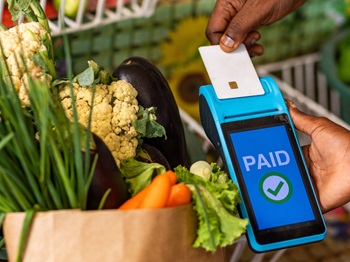<p style="text-align:center;"><em>Fresh foods are driving grocery growth, with strong sales performance, operational stability, and expanding influence both in-store and online.</em></p><p>By: Rick Stein, Vice President, Fresh Foods, FMI</p><p><img src="https://www.fmi.org/images/default-source/blog-images/fresh-produce-drives-value.tmb-large-350-.jpeg?Culture=en&sfvrsn=43c752ca_2" style="float:right;margin:10px;" alt="Fresh produce drives value" class="-align-right" sf-size="7480931" />In food retail, fresh food departments spark customer connection. It is often the fresh food departments that greet shoppers as they enter the store, shape shoppers’ weekly meals and nutrition goals and may determine whether a shopper stays loyal or looks elsewhere. Our fourth annual <a href="https://www.fmi.org/forms/store/ProductFormPublic/the-state-fresh-foods-2025"><em>The State of Fresh Foods 2025</em></a> report confirms what many of us in the industry already know—fresh is not only where the action is, but also where the future is headed. Here are four key points from the report that showcase the strong state of fresh foods departments in food retail:<br /></p><h5>Fresh Foods Total Grocery Sales</h5><p>Fresh foods accounted for 42% of total grocery sales in 2024. That’s not just a number—it’s a reflection of how central these departments have become to the shopping experience. Departments like meat and produce each brought in 11% of total store sales, reinforcing their role as cornerstones of the perimeter. When you walk through a store and see a well-run meat case or a beautifully displayed seafood counter, you’re witnessing the kind of retail that keeps customers coming back.<br /></p><h5>Operations Numbers Holding Strong</h5><p>We also saw encouraging signs when it comes to operations. Shrink in fresh food departments remained stable compared to the previous year, even as center store categories saw increases. That’s a testament to how much progress has been made in inventory and demand planning technologies tailored for fresh foods. Likewise, department manager openings in fresh foods have leveled off, showing improved workforce stability.<br /></p><h5>Fresh Food Departments Show Strong Performance<strong> </strong></h5><p>Foodservice, in particular, had a breakout year, reaching $56 billion in sales. That kind of success is the result of food retailers listening to their customers, delivering on quality and convenience and creating in-store experiences that go beyond the traditional grocery trip. Nearly a third of retailers say foodservice is their top area for labor expansion in 2025.<br /></p><p>Not every department saw growth—bakery unit sales dipped slightly (-1.4%) and seafood dollar sales dipped by 1.2%—but both continue to hold strategic value. These categories offer something unique: an emotional connection to flavor, freshness and indulgence. With the right promotional support and product innovation, they’re well-positioned to regain momentum.<br /></p><h5>Fresh Foods and Ecommerce<strong> </strong></h5><p>Fresh foods are also carving out more space online. While 9.3% of fresh sales happened digitally, that share is growing, up 5.2 percent from the year before. Food retailers are moving fast to keep pace, with 85% of their fresh foods assortment now available online.<br /></p><p>Fresh foods are more than a department; they’re a strategy. They drive customer loyalty, fuel workforce development and demand innovation at every turn. As shopper expectations continue to evolve, fresh will remain at the center of the story.</p><a href="https://www.fmi.org/forms/store/ProductFormPublic/the-state-fresh-foods-2025"></a><a href="https://www.fmi.org/forms/store/ProductFormPublic/the-state-fresh-foods-2025" class="button">Read the Full Report</a><div><div><div id="_com_1" language="JavaScript"><p></p></div></div></div>
[#item_full_content]



